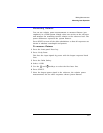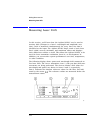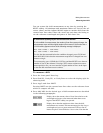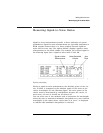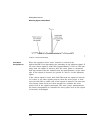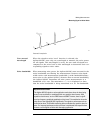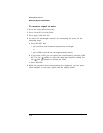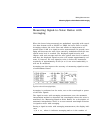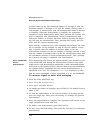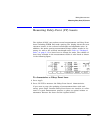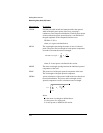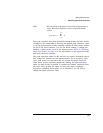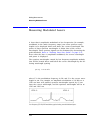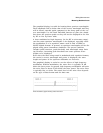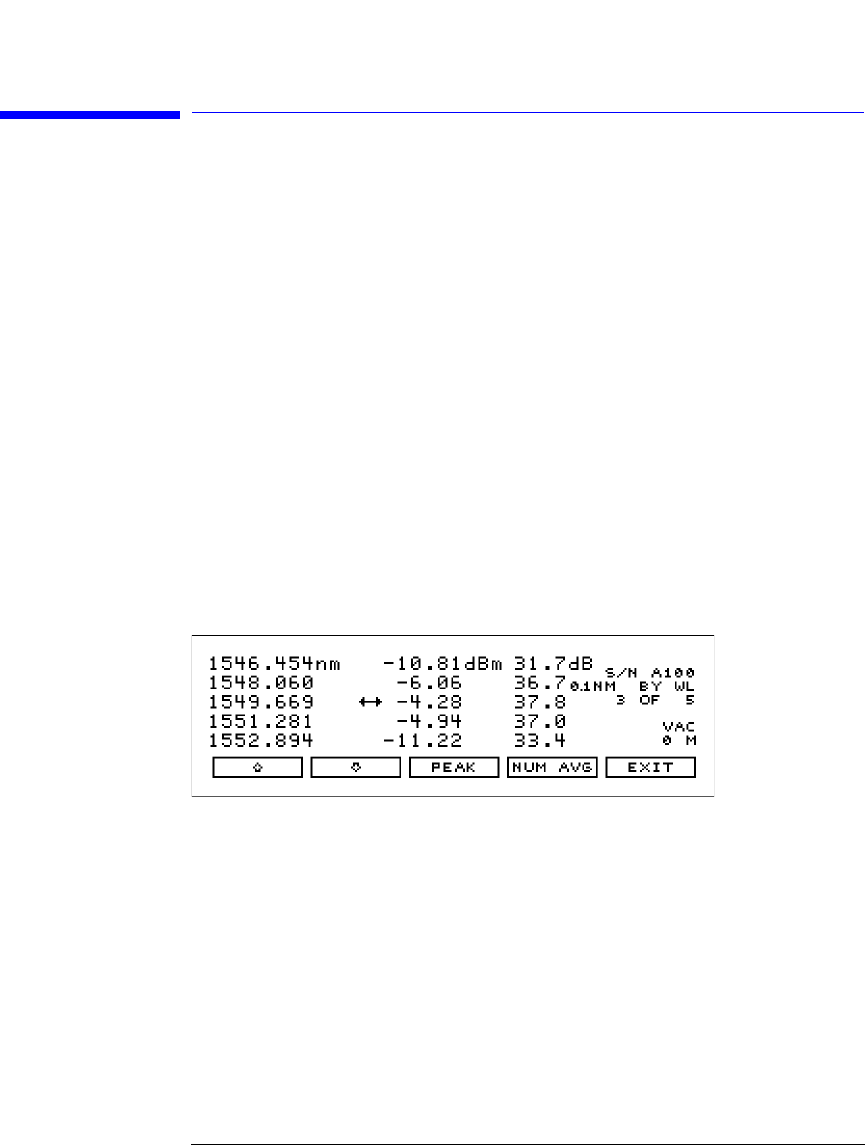
2-29
Making Measurements
Measuring Signal-to-Noise Ratios with Averaging
Measuring Signal- to- Noise Ratios with
Averaging
When the lasers being measured are modulated, especially with repeti-
tive data formats such as SONET or PRBS, the noise floor is raised.
Averaging reduces the noise floor and allows an improvement of
greater than 10 dB in a signal- to- noise measurement. In general, aver-
aging will decrease the noise floor caused by modulation until the true
optical noise level is reached. The displayed signal- to- noise will
improve with each average until the true optical noise level is reached,
and then the displayed signal- to-noise will remain approximately con-
stant. If, however, the true signal-to-noise is below the instrument
sensitivity of approximately 40 dB (in a 0.1 nm noise bandwidth), it
will not be measured.
Averaging can also improve the accuracy of measuring signal-to-noise
of unmodulated lasers.
Signal-to-noise with averaging display.
Averaging is performed on the noise, not on the wavelength or power
of the laser signals.
The signal-to- noise with averaging measurement uses the automatic
interpolation method to determine the wavelengths where the noise is
measured. See "Measuring Signal-to-Noise Ratios" for a description of
automatic interpolation. There is no user-entered wavelength selection
in signal-to-noise with averaging.
During a signal-to-noise with averaging measurement, the display indi-
cates
S/N A xx, where A indicates averaging and xx is the number of



